 Photo of a field of wind turbines
Photo of a field of wind turbines
Many governments around the world subsidize the energy consumption of their citizens. Despite the negative economic and social consequences of providing these subsidies, embarking on meaningful reforms has been challenging for policymakers, especially in the face of rising costs of living. Yet rising debt distress in many parts of the world and the need to address climate change by curbing greenhouse gas emissions from fossil fuels have redoubled the urgency to address these subsidies.
A new study by the World Bank suggests that public support for energy subsidy reform could be significantly increased by packaging it with compensatory policies. The study draws on survey data from 37,000 respondents in 12 middle-income countries that collectively provided over $200 billion in explicit fossil fuel subsidies in 2022.
The 12 countries included in the study are Angola, Argentina, Bangladesh, Bolivia, Ecuador, Egypt, Ghana, Indonesia, Kazakhstan, Nigeria, Pakistan, and Vietnam, and predominantly subsidize either fuel or electricity. It represents the largest cross-country study covering middle-income countries on this issue, presenting insights on how knowledge and beliefs influence views on energy subsidy reform and how attitudes can shift.
Five main messages emerge from the analysis.
First, baseline support for subsidy reforms is low. Without anything offered in return, less than a third of respondents were willing to support a reduction in fuel or electricity subsidies that would lead to an increase in prices (figure 2). This is partly because subsidies are so entrenched in many countries, to the extent that relatively few people are aware that their energy consumption is subsidized. In our study, on average, just over half of respondents knew that fuel or electricity subsidies existed in their country (figure 3).
Figure 2. Level of support for energy subsidy reform without any compensatory measures (%)
Note: This figure shows the share of respondents who answered that they would either “strongly support” or “somewhat support” a reduction in energy subsidies that leads to a price increase.
Source: Bank staff estimation based on online survey data from 12 countries.
Figure 3. Level of awareness that energy subsidies exist in their country (%)
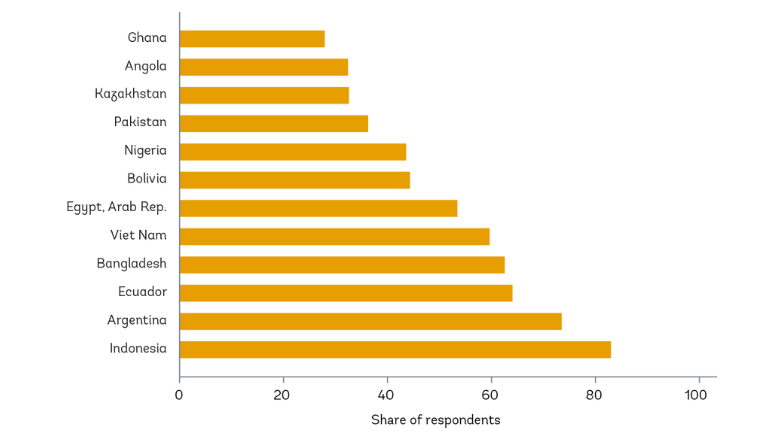
Note: This figure shows the share of respondents who answered that they would either “strongly support” or “somewhat support” a reduction in energy subsidies which leads to a price increase.
Source: Building Public Support for Energy Subsidy Reforms: What Will it Take?
Second, support for reforms can increase when the reform proposition is packaged with compensatory policies. In our sample, support for reform doubled and even tripled in some instances when respondents were offered policy options that could be financed by subsidy savings. There was a clear preference among survey respondents for spending toward better schools, hospitals, and roads over cash transfers or tax cuts. However, even the least popular choice—universal cash transfers—was favored by over 60 percent of respondents (figure 4).
Figure 4. Levels of support for alternative policy options (%)
Note: This figure shows the share of respondents in each country that was supportive of a reduction in energy subsidies alongside the implementation of one of the following alternative policies: (i) cash transfers to all households; (ii) cash transfers to poor households; (iii) a reduction in income taxes; (iv) better schools, hospitals, and roads; (v) a reduction in the public debt; (vi) investments to improve the environment (like improving air quality); and (vii) more reliable access to electricity and fuel.
Source: Bank staff estimation based on online survey data from 12 countries
Third, deeply held beliefs about subsidies—such as believing that citizens are entitled to them or doubts about the government’s ability to implement reforms—pose obstacles, but they can be overcome. When compensatory policies were offered, respondents who believed they had a right to subsidies were just as likely to support reforms as those who did not share the same belief (figure 5).
The government’s capacity to deliver on the conditional offers would be critical to realizing the reform package. Efforts to put in place commitment devices to signal credibility of the counteroffer could further bolster reform efforts. Meanwhile, respondents who trusted the government were consistently more likely to support subsidy reforms, regardless of whether compensatory policies were offered.
Figure 5. Characteristics and beliefs associated with support for an energy subsidy reform accompanied by compensatory policies
Note: This bar graph shows the coefficients from an ordinary least squares regression with country fixed effects, estimating the relationship between respondent characteristics and beliefs and support for an energy subsidy reform which is accompanied by compensatory policies. The blue and orange colors of the bar graphs indicate that the estimated relationship is statistically significant at the 5% level and positive or negative, respectively. “Actual poor” is based on reported actual income and refers to respondents with household income in the bottom 40 percent of the income distribution. “Perceived poor” and “perceived middle class” are based on respondents’ perceived position in the income distribution. The grey color indicates that the estimate is not statistically significant.
Source: Bank staff estimation based on online survey data from 12 countries.
Fourth, providing information about the negative consequences of energy subsidies—particularly environmental damage from the overconsumption of fossil fuels—helped increase support for reform. The shift in views was largest among respondents who perceived themselves as middle class, an important part of the electorate in countries where fuel is the main form of subsidized energy (figure 6).
Figure 6. The effect of providing information about the harmful environmental impact of energy subsidies on unconditional support, by perceived income group (%)
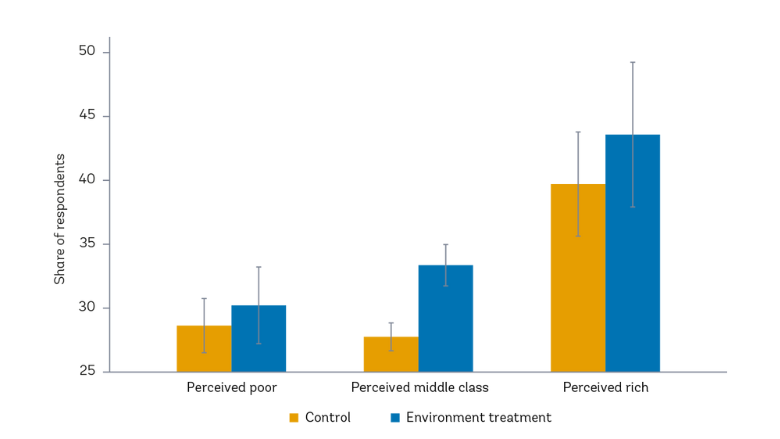
Note: “Perceived poor,” “perceived middle class,” and “perceived rich” refer to respondents who perceived themselves to be in the bottom 40 percent, middle 20 percent, and the top 40 percent of the income distribution, respectively. Estimates are based on a subsample of countries that predominantly subsidize fuel.
Source: Bank staff estimation based on online survey data from 12 countries.
Finally, as the reform process unfolds, open and iterative communication with the public can foster a better understanding of their diverse and evolving policy preferences. The written answers to an open-ended question in the survey, where respondents could freely express their opinion, showed that better education and health were the most salient demands. Still, they also unveiled a much more detailed list of priorities (figure 7).
Figure 7. Frequency of policy themes that were preferred as policy alternatives to energy subsidies
Note: The bigger and bolder the word appears in the word cloud, the more often it was mentioned in the written answers to the open-ended question.
Source: Bank staff estimation based on online survey data from 12 countries.
The study underscores that it is possible to make progress on a challenging reform agenda. Effective communication can help policy makers aggregate the public’s views and policy priorities and dynamically track progress and gaps in the implementation of compensatory measures as the reform unfolds. However, they should undertake such reforms with a long-term view, given the complex institutional and political realities.
Subscribe here to stay up to date with the latest Energy blogs.
Related Reading:
- Building Public Support for Energy Subsidy Reforms: What Will it Take?
- How can cash transfers support energy subsidy reforms?
- What have we learned from real-world experiences with energy subsidy reforms and cash transfers?
- How can we understand the impact of energy subsidies and their reform on households?

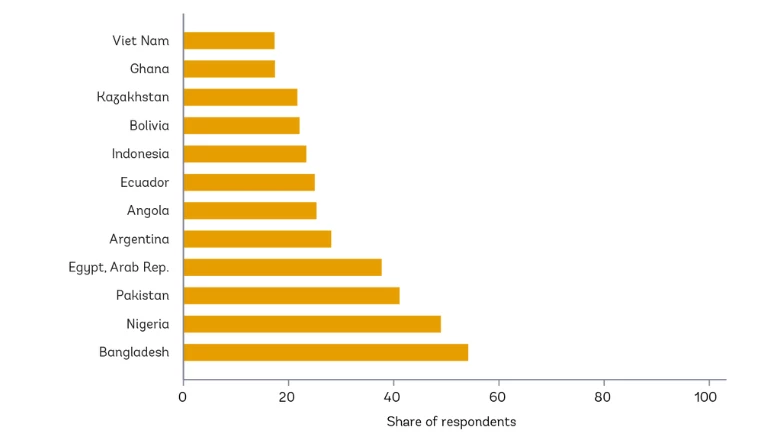
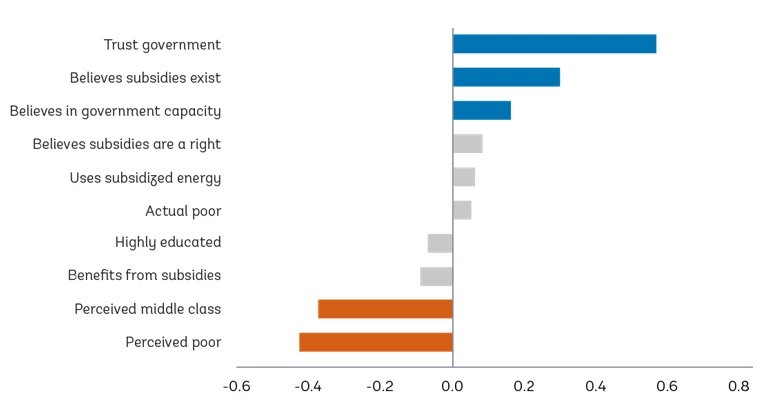
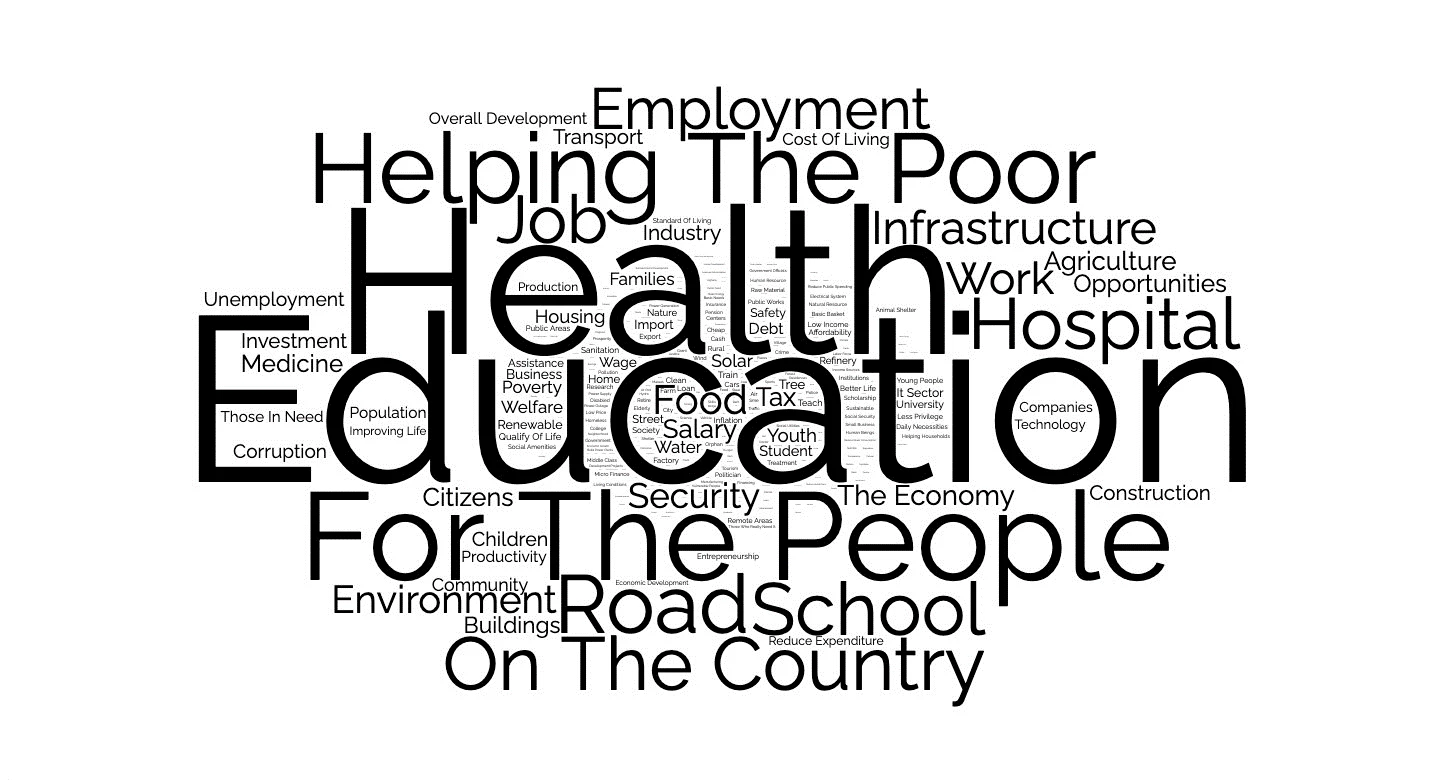





Join the Conversation